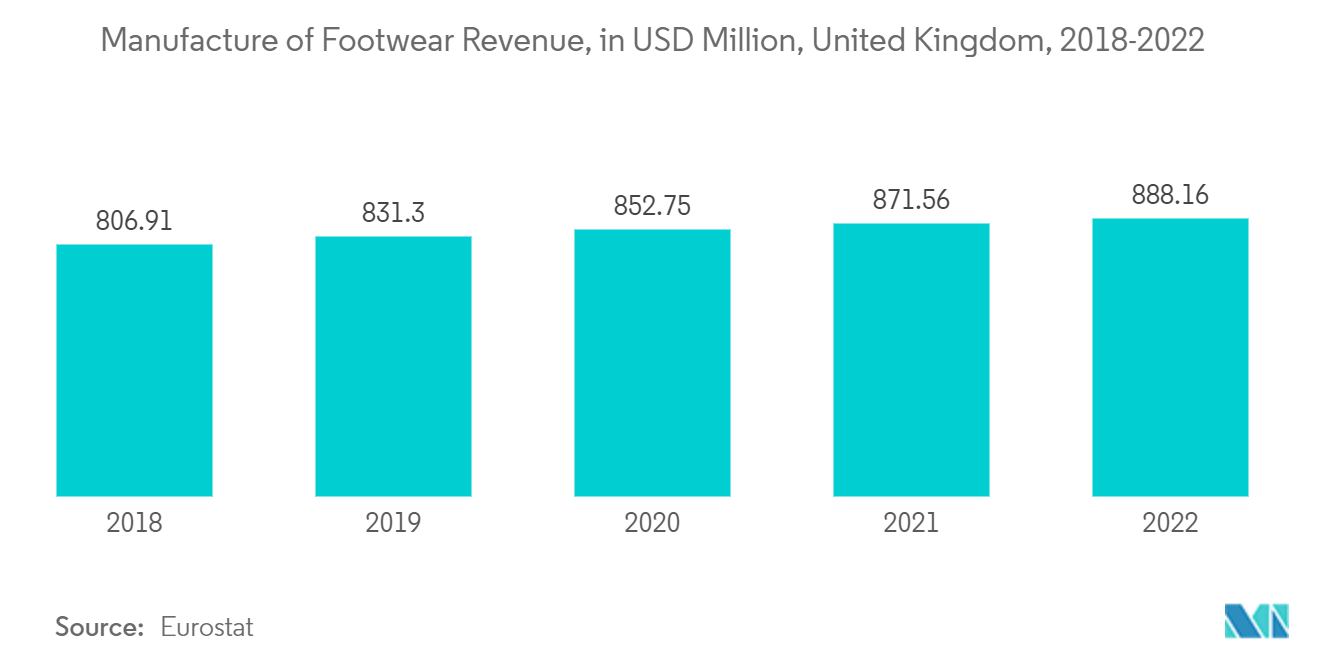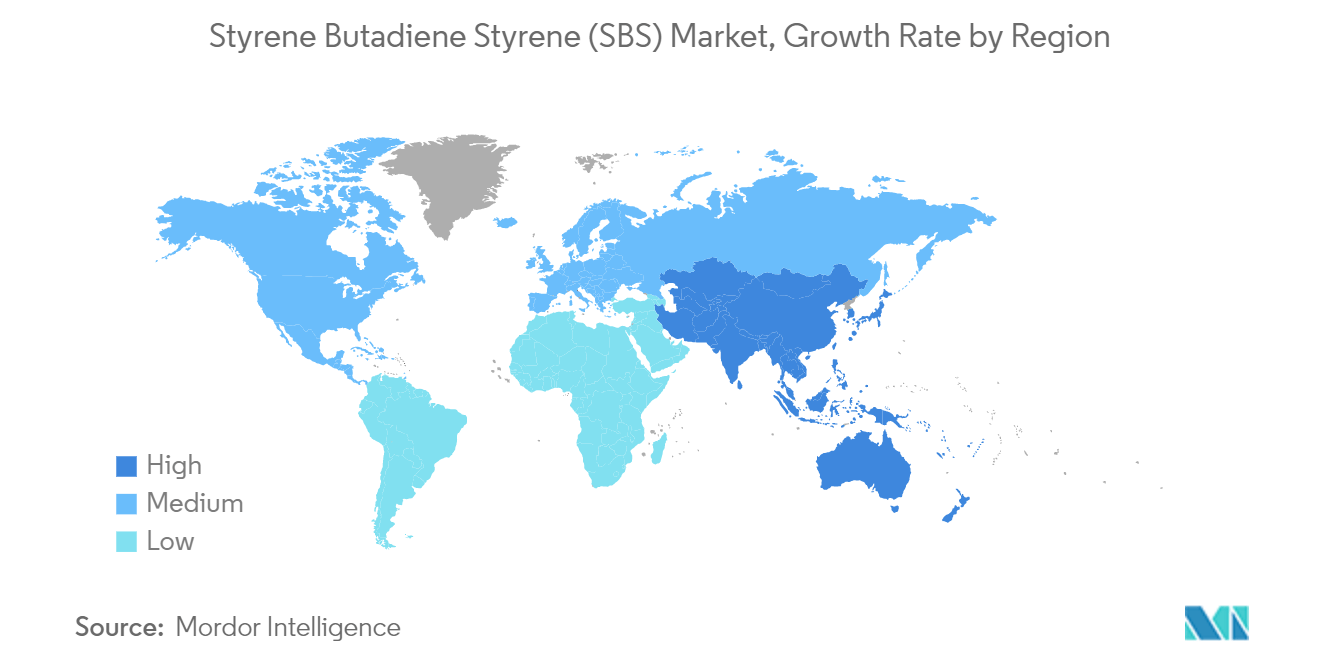Market Trends of Styrene Butadiene Styrene (SBS) Industry
Footwear Segment is Anticipated to Hold a Significant Share
- Styrene-butadiene-styrene (SBS) is a thermoplastic elastomer that has the same flexibility as rubber at room temperature and can be melted to flow at high temperatures like plastics, thus the name plastic substance. As a result, the SBS-modified asphalt is neither sticky when heated nor brittle when cooled, making it ideal for manufacturing comfortable footwear for daily usage.
- SBS (styrene-butadiene-styrene) is a thermoplastic hard rubber that can nearly fully replace natural rubber. The increased usage of SBS is due to its numerous advantages for the industry as compared to the use of regular rubber. These benefits are separated into those that help the customer and those that benefit the manufacturer, and they include more comfortable footwear, increased durability, and lighter footwear.
- SBS stands out because it is adaptable to a wide range of applications. It is effective as a sealer as well as an adhesive for the hot melt process. It is also utilized in the production of footwear since, as a thermoplastic elastomer, it is perfect for injection of parts such as slipper soles and other types of footwear. Curing periods are significantly shorter than those required for vulcanized elastomers.
- China is currently the world's largest manufacturer of shoes and slippers, accounting for over 60% of total footwear production worldwide. According to the National Bureau of Statistics, the revenues of enterprises manufacturing leather, fur, or feathers amounted to RMB 1,105.72 billion (USD 160.54 billion) in 2021, up 8.2% yearonyear.
- In 2022, Nike's footwear revenue from Greater China amounted to about USD 5.42 billion. This was slightly less than the previous year.
- The footwear industry was estimated to increase 16.2% in volume in 2022, reaching 2,360 million pairs by 2025. Non-luxury brands account for 89% of footwear sales. According to the Footwear Distributors & Retailers of America, the United States produces 25 million pairs of shoes every year.
- According to Eurostat, by 2022, the revenue from footwear manufacturing in the United Kingdom will be over USD 888 million.
- All the aforementioned factors are expected to drive the footwear segment, which also enhanced the demand for styrene-butadiene-styrene during the forecast period.

Asia-Pacific Region to Dominate the Market
- The global styrene-butadiene-styrene market is divided into seven geographical areas. China has the biggest market share and will be the top SBS user during the projection period.
- Asia Pacific is predicted to increase at a modest rate throughout the projection period. Increasing disposable income in emerging nations is driving demand for convenience items, helping the growth of the worldwide styrene butadiene styrene market.
- Styrene Butadiene Styrene (SBS) is the most often used synthetic rubber in adhesives and sealants, and it is made from a copolymer of styrene and butadiene. SBS adhesives outperform natural rubber adhesives in terms of heat, abrasion, and fracture resistance, as well as aging qualities.
- China Adhesive 2022 is the world's first and only adhesive industry exhibition to be UFI certified, bringing together adhesives, sealants, PSA sellotape, and film goods. Based on 24 years of continuous growth, China Adhesive 2022 has earned a reputation as one of the world's premier exhibits in terms of its large scope and great effect.
- Asphalt is the best waterproofing material, but it has poor aging characteristics and is brittle in cold weather. Elastomeric compounds such as SBS improve these properties, leading to improved quality and performance of roofing materials for flat roofs. As a result, SBS is also utilized in the construction sector.
- According to the National Bureau of Statistics of China, China's construction production value peaked in 2022 at roughly CNY 31.2 trillion.
- Furthermore, China is experiencing a development boom. The country is the world's largest construction market, accounting for 20% of all worldwide construction investments. By 2030, the country as a whole is estimated to spend over USD 13 trillion on construction.
- The country's expanding economy has contributed to a number of advancements in the residential and commercial construction sectors, which have fueled China. In China, the Hong Kong housing authorities implemented a number of initiatives to encourage the building of low-cost homes. Officials hope to provide 301,000 public housing units over the next ten years, until 2030.
- Additionally, according to the Ministry of Statistics and Program Implementation, in the fourth quarter of 2022, India's construction sector was valued at more than INR 3 trillion (USD 36662640000). This was a huge gain over 2020, when the value fell owing to the coronavirus (COVID-19) epidemic. The construction and industrial industries in the country were among the hardest hit at the time. Nonetheless, the sector appeared to swiftly recover and return to pre-crisis levels.
- As a result, all the causes listed above are projected to increase demand for the styrene butadiene styrene market in the Asia-Pacific region in the future.


